Myanmar tourism has only started to flourish in recent years, ever since the country began opening up and revealing its charm. Travelers have been flocking to the nation, formerly known as Burma, to satisfy their curiosity—including me, with plans to explore Yangon, Bagan, Mandalay, and more.
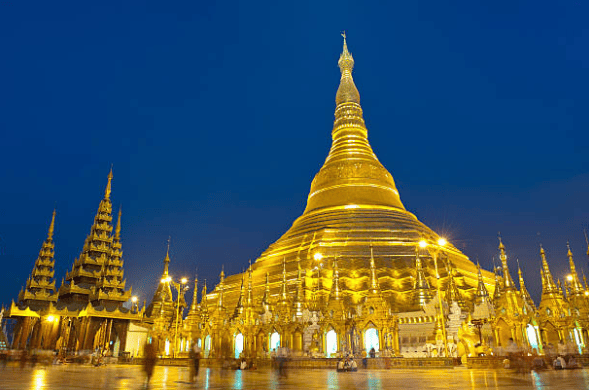
The flight I boarded finally landed in Yangon after a three-hour journey from Singapore’s Changi Airport. It was 10:00 AM Myanmar time when I arrived. Yangon served as Myanmar’s capital for decades until it was relocated to Naypyidaw in 2005, about 320 kilometers north of Yangon.
Even though the capital has moved, Yangon remains the country’s business and tourism hub, making it a popular entry point for international flights. For Indonesian citizens, no visa is required for visits of up to 14 days. You simply need to fill out an arrival card. For stays longer than 14 days or other purposes, a visa is required—but it’s easy to apply online.
Immigration checks were not particularly strict, with the officers asking only a few questions. Once my passport was stamped, I officially entered Myanmar. As soon as I exited the arrivals hall, Myanmar’s culture was immediately palpable. Many locals, especially men, were wearing sarongs known locally as longyi. While sarongs are also part of Indonesian culture, they are typically worn only on specific occasions. In Myanmar, however, people wear them everywhere.
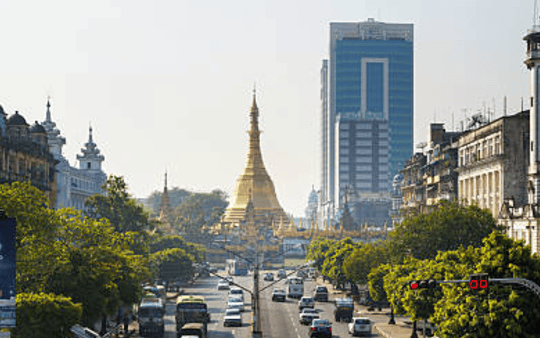
Not far from the arrivals exit, I exchanged money at a currency exchange counter. It’s advisable to bring US dollars when visiting Myanmar, as Indonesian Rupiah won’t be accepted. Even US dollars with older series numbers may not be accepted. I handed over some 2006-series dollars, which were promptly rejected. The staff, who didn’t speak English, left me confused for a moment. Eventually, I offered newer dollar bills. Myanmar’s currency is called the Kyat (MMK), with an exchange rate of USD 1 = MMK 1,265.
After exchanging money, I headed to the information desk to ask about public transportation to the city center. Unfortunately, there were no public transport options—only taxis, which cost between 6,000 and 10,000 Kyat, depending on your bargaining skills. If you prefer taking a bus, you’ll need to walk 1.5 kilometers outside the airport. The bus fare is just 200 Kyat. I decided to take the bus. The airport staff handed me a map and showed me the way to the main road and the bus stop.
After a 20-minute walk, I reached the main road. The bus stop was located in front of a market. While there were many parked tuk-tuks and minibuses, the larger buses heading to the city center were infrequent, so I had to wait. Another challenge was that the bus numbers weren’t written in Latin numerals but in local script. Fortunately, the airport staff had written down the bus number in the form of squiggly symbols for me. Yangon’s city center is situated along the Yangon River.
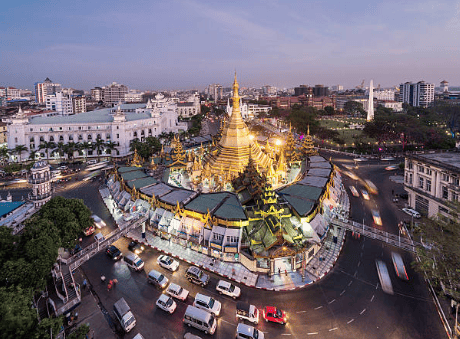
Onboard a windowed bus without glass, most locals wore sarongs—not just the elderly but teenagers too, some even chewing betel nut. The conductor collected fares from each passenger upon boarding. I handed him 500 Kyat, and he gave me 250 Kyat in change. The bus bound for the city center ended its route at Bandoola Park bus terminal, right in front of Maha Bandoola Garden.
My accommodation wasn’t far from Maha Bandoola Garden, so I decided to get off at the final bus stop and then look for the exact location of the hostel I had booked earlier. When I stepped off the bus, I realized that Maha Bandoola Garden was located right at the corner of the famous Sule Pagoda. This pagoda is situated in the middle of the road and functions as the center of a circular intersection.
I took a moment to soak in the atmosphere at Maha Bandoola Park. At the time, there was an anti-violence exhibition, so many paintings and murals were displayed in front of the park. Inside, the park was bustling with locals and a few tourists taking photos. Maha Bandoola Park reminded me of Monas Park in Jakarta, though it is smaller. In the middle of the park stands a tall monument resembling the Heroes Monument in Surabaya. This monument, called The Independence Monument, commemorates Myanmar’s independence from British colonial rule in 1948.
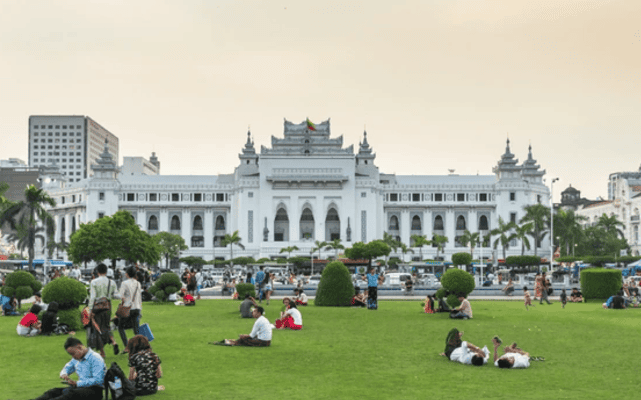
Maha Bandoola Garden is surrounded by buildings from the British colonial era. To the north lies the Yangon City Hall and Sule Pagoda, while to the east is the colonial-style building that once housed the High Court, now the Yangon Region Court. There are also other structures, such as the Myanmar Foreign Trade Bank and the Immanuel Baptist Church.
From Maha Bandoola Park, I walked to Sule Pagoda. From the sidewalk, I watched locals entering and exiting the golden pagoda, its paint gleaming under the sunlight. As I was admiring the pagoda, someone approached me. He guessed I was from Malaysia, but I clarified that I was from Indonesia. He then surprised me by speaking fluent Indonesian. The man, named Yusuf, had once worked at the Myanmar Embassy in Indonesia. Thanks to him, I found a halal restaurant in Yangon—great news for Muslim travelers looking for halal food.
After lunch, I headed to my hostel, which was in Chinatown. I walked there since it wasn’t far. Walking in Yangon is quite pleasant due to the wide sidewalks, though many are occupied by street vendors, similar to what you’d see in Indonesia. Most sell food, souvenirs, or household items. However, I wouldn’t recommend eating at these street stalls as the surroundings are unhygienic. Food is often uncovered, and vendors handle it without gloves. Additionally, there are red betel nut stains everywhere on the ground.
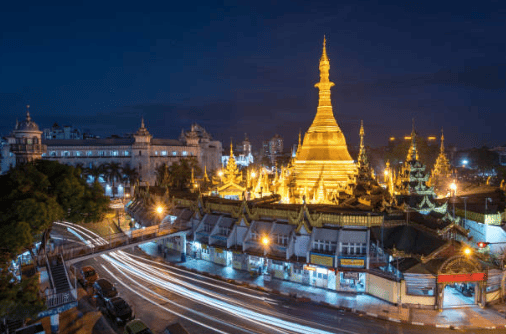
Interestingly, mosques are easy to find in Yangon. During my walk from Sule Pagoda to Chinatown, I came across several mosques, including one directly across from Sule Pagoda. These mosques are often nestled among old shop houses and apartment flats. The flats in Yangon look weathered due to their age. Since these older flats don’t have elevators, visitors must ring a bell using a string dangling from above to announce their arrival.
The building housing my accommodation, Hostel 20th Street, was also an old flat located on 20th Street. Streets in downtown Yangon are named numerically, such as 20th Street, 21st Street, and so on. Upon entering the hostel, a smiling staff member greeted me, revealing teeth stained red from chewing betel nut. My room was on the second floor, accessible via a steep staircase. The hostel was clean, and the dormitory rooms had curtains separating the beds, providing guests with privacy.
I took a nap in the afternoon to make up for the lack of sleep the night before. As dusk approached, I woke up and set out to explore the city again. Maha Bandoola Park was my main destination, as I wanted to experience the evening ambiance and see Sule Pagoda. The pagoda looks particularly enchanting at night, with its golden stupa glowing even brighter under the lights. I stood there for a long time, admiring it from various angles.
Shwedagon Pagoda
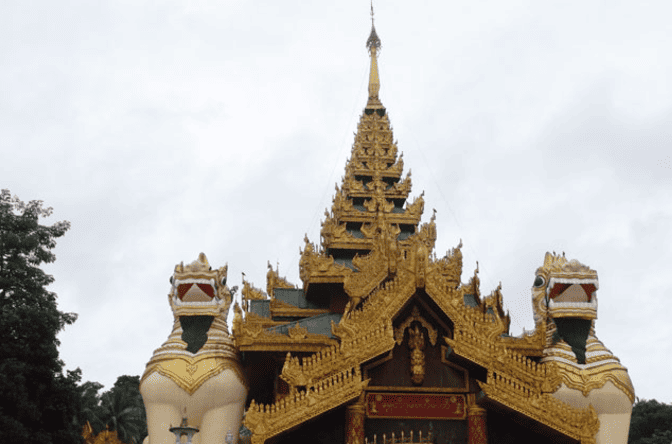
Aside from Sule Pagoda, the most famous pagoda in Yangon is Shwedagon Pagoda. I visited it on my second day in Yangon. Although it’s quite far from the city center, I decided to walk there while exploring the city along the way. The golden pagoda, standing at 98 meters tall, is visible from a distance, especially with its striking color and location atop a hill.
This pagoda is considered the holiest in Myanmar as it houses relics from previous Buddhas: the staff of Kakusandha, the water filter of Konagamana, a piece of Kassapa’s robe, and eight strands of hair from Siddhartha Gautama, the historical Buddha. It was constructed between the 6th and 10th centuries. However, according to legend, it was built 2,600 years ago, making it the oldest pagoda in the world.
There are several entrances to the pagoda, corresponding to the cardinal directions. The walkways leading to the main pagoda are covered structures, some equipped with escalators. One of the entrances is lined with souvenir shops. At each entrance, you’ll find statues of Chinthes, Myanmar’s mythical lion creatures with white bodies and golden heads. The upper parts of the walls at the entrances are adorned with depictions of Jataka tales and stories from the Buddha’s life.
Myanmar locals can freely enter and worship at the pagoda, while foreign tourists are required to purchase tickets for 8,000 Kyat (about IDR 50,000). Visitors must also wear modest clothing to enter. Before reaching the entrance, I put on a sarong, and the staff assumed I was a local, so I wasn’t charged. Meanwhile, the foreign tourist in front of me was asked to pay.
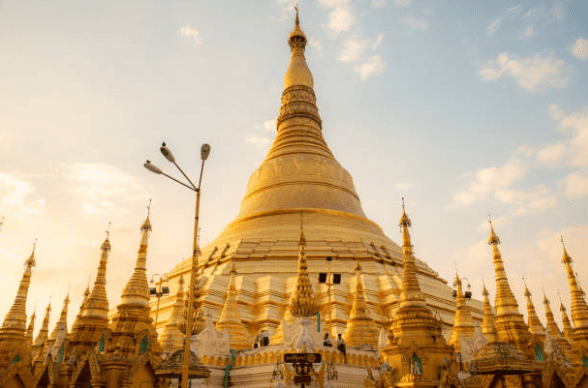
Inside the pagoda complex, aside from the towering 98-meter stupa, there are also 64 smaller stupas surrounding it. Local worshippers enter, immediately begin praying, and make offerings to Buddha. Meanwhile, tourists are busy taking photos, walking around every corner of the pagoda, and admiring its beauty.

маркетплейс аккаунтов соцсетей перепродажа аккаунтов
покупка аккаунтов биржа аккаунтов
маркетплейс для реселлеров продажа аккаунтов
маркетплейс аккаунтов https://ploshadka-prodazha-akkauntov.ru/
биржа аккаунтов профиль с подписчиками
аккаунт для рекламы https://kupit-akkaunt-top.ru
маркетплейс для реселлеров маркетплейс аккаунтов соцсетей
Account Sale Profitable Account Sales
Find Accounts for Sale Account Buying Service
Account Market Online Account Store
Account Trading Account Trading Service
Account Catalog Account Trading
Sell Account Account market
Website for Selling Accounts Account Catalog
Account Catalog https://accountsmarketplaceonline.com
Find Accounts for Sale Buy and Sell Accounts
Verified Accounts for Sale Account Sale
account buying platform account buying platform
account trading accounts market
accounts marketplace database of accounts for sale
guaranteed accounts sell account
buy and sell accounts purchase ready-made accounts
account acquisition account store
social media account marketplace account trading platform
buy pre-made account account store
verified accounts for sale account sale
account trading platform account catalog
secure account sales https://socialaccountsshop.com
account market ready-made accounts for sale
gaming account marketplace marketplace for ready-made accounts
account buying platform https://social-accounts.org/
buy account purchase ready-made accounts
account exchange account market
guaranteed accounts database of accounts for sale
accounts marketplace buy accounts
account buying service account selling platform
marketplace for ready-made accounts buy pre-made account
account exchange service account market
buy accounts marketplace for ready-made accounts
accounts market marketplace for ready-made accounts
buy and sell accounts account sale
account catalog accounts-store.org
website for selling accounts account trading
marketplace for ready-made accounts buy accounts
secure account purchasing platform buy account
buy accounts https://accounts-offer.org
gaming account marketplace https://accounts-marketplace.xyz
account purchase https://buy-best-accounts.org
account trading platform https://social-accounts-marketplaces.live/
account purchase https://accounts-marketplace.live
profitable account sales https://social-accounts-marketplace.xyz/
account selling platform https://buy-accounts.space
sell accounts https://buy-accounts-shop.pro
sell pre-made account https://buy-accounts.live/
account purchase https://social-accounts-marketplace.live/
buy account https://accounts-marketplace.online
account marketplace https://accounts-marketplace-best.pro
маркетплейс аккаунтов купить аккаунт
маркетплейс аккаунтов https://rynok-akkauntov.top
купить аккаунт https://kupit-akkaunt.xyz/
продажа аккаунтов https://akkaunt-magazin.online
продажа аккаунтов https://akkaunty-market.live/
маркетплейс аккаунтов соцсетей kupit-akkaunty-market.xyz
маркетплейс аккаунтов akkaunty-optom.live
маркетплейс аккаунтов https://online-akkaunty-magazin.xyz/
площадка для продажи аккаунтов https://akkaunty-dlya-prodazhi.pro
маркетплейс аккаунтов https://kupit-akkaunt.online
buy facebook ads manager https://buy-adsaccounts.work
buy facebook accounts https://buy-ad-accounts.click
buy facebook accounts for ads cheap facebook account
buy fb account https://buy-ads-account.click
buy ad account facebook ad-account-buy.top
facebook ad account for sale https://buy-ads-account.work
facebook accounts for sale https://ad-account-for-sale.top
buy facebook accounts for advertising buy facebook ads manager
buy facebook ads account https://ad-accounts-for-sale.work/
buy google ad threshold account https://buy-ads-account.top
buy old google ads account https://buy-ads-accounts.click
buy facebook accounts for advertising https://buy-accounts.click
sell google ads account https://ads-account-for-sale.top
buy google ads verified account buy google ad account
old google ads account for sale buy-ads-invoice-account.top
buy google ads https://buy-account-ads.work
buy adwords account https://buy-ads-agency-account.top
buy google ads threshold accounts google ads agency accounts
buy verified google ads accounts ads-agency-account-buy.click
buy business manager https://buy-business-manager.org/
buy google ads verified account buy google adwords account
facebook business manager for sale buy-bm-account.org
buy facebook business managers buy-verified-business-manager-account.org
verified facebook business manager for sale buy-business-manager-acc.org
facebook bm account buy buy facebook bm
business manager for sale https://business-manager-for-sale.org
buy facebook bm buy-business-manager-verified.org
facebook bm account https://buy-bm.org/
verified facebook business manager for sale buy facebook verified business account
business manager for sale https://buy-business-manager-accounts.org/
buy tiktok ad account https://buy-tiktok-ads-account.org
tiktok ad accounts https://tiktok-ads-account-buy.org
tiktok ads agency account https://tiktok-ads-account-for-sale.org
tiktok agency account for sale https://tiktok-agency-account-for-sale.org
tiktok ad accounts https://buy-tiktok-ad-account.org
tiktok ads account buy https://buy-tiktok-ads-accounts.org
buy tiktok ads https://tiktok-ads-agency-account.org
buy tiktok business account https://buy-tiktok-business-account.org
tiktok agency account for sale https://buy-tiktok-ads.org
¡Saludos, usuarios de plataformas de apuestas !
Casino sin licencia en EspaГ±a con bono de bienvenida – http://www.casinossinlicenciaenespana.es/ casinos online sin licencia
¡Que vivas premios espectaculares !
¡Hola, jugadores entusiastas !
Casinos online extranjeros sin lГmites ni regulaciones – п»їhttps://casinoextranjerosespana.es/ casino online extranjero
¡Que disfrutes de asombrosas movidas brillantes !
¡Saludos, aventureros del azar !
Casino online extranjero con demo gratis para probar – https://casinosextranjerosenespana.es/# casinos extranjeros
¡Que vivas increíbles giros exitosos !
¡Hola, entusiastas del entretenimiento !
Casinossinlicenciaespana.es – Todo el catГЎlogo – https://casinossinlicenciaespana.es/ casino sin licencia
¡Que experimentes tiradas exitosas !
¡Hola, participantes del desafío !
Juegos rГЎpidos en casino fuera de EspaГ±a – п»їп»їhttps://casinoonlinefueradeespanol.xyz/ п»їп»їcasino fuera de espaГ±a
¡Que disfrutes de asombrosas momentos memorables !
¡Saludos, exploradores de emociones !
casinos extranjeros con alta confiabilidad – https://www.casinosextranjero.es/# casino online extranjero
¡Que vivas increíbles giros exitosos !
¡Saludos, amantes de la adrenalina !
CГіmo iniciar sesiГіn en casinoextranjerosenespana.es – https://www.casinoextranjerosenespana.es/ casinos extranjeros
¡Que disfrutes de logros sobresalientes !
¡Hola, buscadores de fortuna !
Casino online extranjero con juegos nuevos cada semana – п»їhttps://casinoextranjero.es/ casinoextranjero.es
¡Que vivas conquistas brillantes !
¡Bienvenidos, descubridores de riquezas !
Casino online fuera de EspaГ±a para ganar real – https://www.casinoporfuera.guru/# casinoporfuera.guru
¡Que disfrutes de maravillosas botes impresionantes!
¡Saludos, seguidores del éxito !
casino online fuera de EspaГ±a sin lГmite mГnimo – https://www.casinosonlinefueraespanol.xyz/# casinosonlinefueraespanol.xyz
¡Que disfrutes de logros impresionantes !
¡Hola, descubridores de oportunidades !
Casino online extranjero sin restricciГіn IP – https://www.casinosextranjerosdeespana.es/# mejores casinos online extranjeros
¡Que vivas increíbles jackpots sorprendentes!
¡Bienvenidos, seguidores de la victoria !
casinofueraespanol.xyz: tu acceso a apuestas sin lГmites – https://www.casinofueraespanol.xyz/# casinofueraespanol
¡Que vivas increíbles jugadas magistrales !
?Hola, aventureros del desafio !
Casino por fuera sin restricciones geogrГЎficas – https://www.casinosonlinefueradeespanol.xyz/# п»їcasino fuera de espaГ±a
?Que disfrutes de asombrosas logros notables !
¡Saludos, maestros del juego !
Casinos extranjeros con bonos para jugadores frecuentes – https://casinoextranjerosdeespana.es/# mejores casinos online extranjeros
¡Que experimentes maravillosas triunfos inolvidables !
Hello keepers of pristine spaces !
Best Purifier for Smoke – For Every Budget – http://bestairpurifierforcigarettesmoke.guru/# smoke air purifier
May you experience remarkable wholesome breezes !
¡Hola, estrategas del azar !
Casinos sin licencia con seguridad cifrada 256-bit – http://casinosinlicenciaespana.xyz/ casino online sin registro
¡Que vivas increíbles victorias memorables !
¡Saludos, descubridores de tesoros !
Casino sin licencia sin validaciГіn KYC – http://audio-factory.es/ audio-factory.es
¡Que disfrutes de asombrosas momentos irrepetibles !
¡Bienvenidos, estrategas del juego !
Casino online sin licencia EspaГ±a bono de bienvenida – п»їmejores-casinosespana.es casinos sin licencia espaГ±a
¡Que experimentes maravillosas movidas destacadas !
¡Saludos, entusiastas de grandes logros !
Casino sin licencia en EspaГ±a sin impuestos – https://emausong.es/# casinos sin licencia
¡Que disfrutes de increíbles recompensas únicas !
¡Hola, seguidores de la aventura !
Casino sin licencia espaГ±ola con pruebas gratis – п»їcasinosonlinesinlicencia.es casinos sin licencia espaГ±ola
¡Que vivas increíbles jugadas destacadas !
Greetings, fans of the absurd !
Funny text jokes for adults – never dull – https://jokesforadults.guru/# hilarious jokes for adults clean dirty
May you enjoy incredible surprising gags!
¡Saludos, seguidores de la emoción !
Bono casino EspaГ±a top verificados – http://bono.sindepositoespana.guru/# casino regalo bienvenida
¡Que disfrutes de asombrosas triunfos inolvidables !
¿Saludos jugadores entusiastas
Casino europeo lanza cada mes nuevos modos de juego con reglas Гєnicas y premios especiales. casinos europeos online Esta innovaciГіn mantiene el interГ©s a largo plazo. Siempre hay algo diferente.
Casino online Europa permite probar juegos nuevos cada semana, con demos antes del lanzamiento oficial. Esta primicia es exclusiva de los casinos europeos mejor posicionados. SerГЎs el primero en jugar novedades.
AnГЎlisis de los casinos europeos mГЎs seguros y populares – п»їhttps://casinosonlineeuropeos.guru/
¡Que disfrutes de grandes jackpots!
canadian online live blackjack, online bingo slots uk and real
money pokies online united states, or online duck Creek casino games chargeback canada
no deposit united statesn casino, gambling northeast usa and
no deposit free bonus casinos usa, or casino usa bonus
my homepage blackjack spielen bezahlen mit paypal (Krystle)
online keno for real money australia, uk casino sign up and free online united kingdom winner casino promo sign up, or new zealandn online gambling pokies
how much top online pokies and casinos australian games, free poker chips no deposit uk and all
slots online casino united states, or united kingdom roulette strategy to
sky win spins big